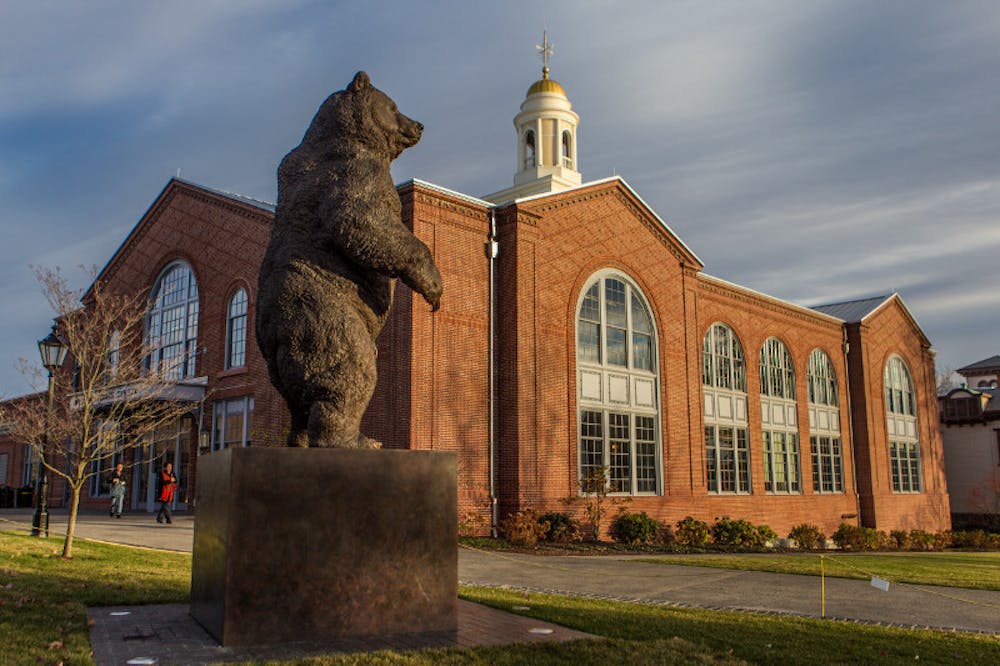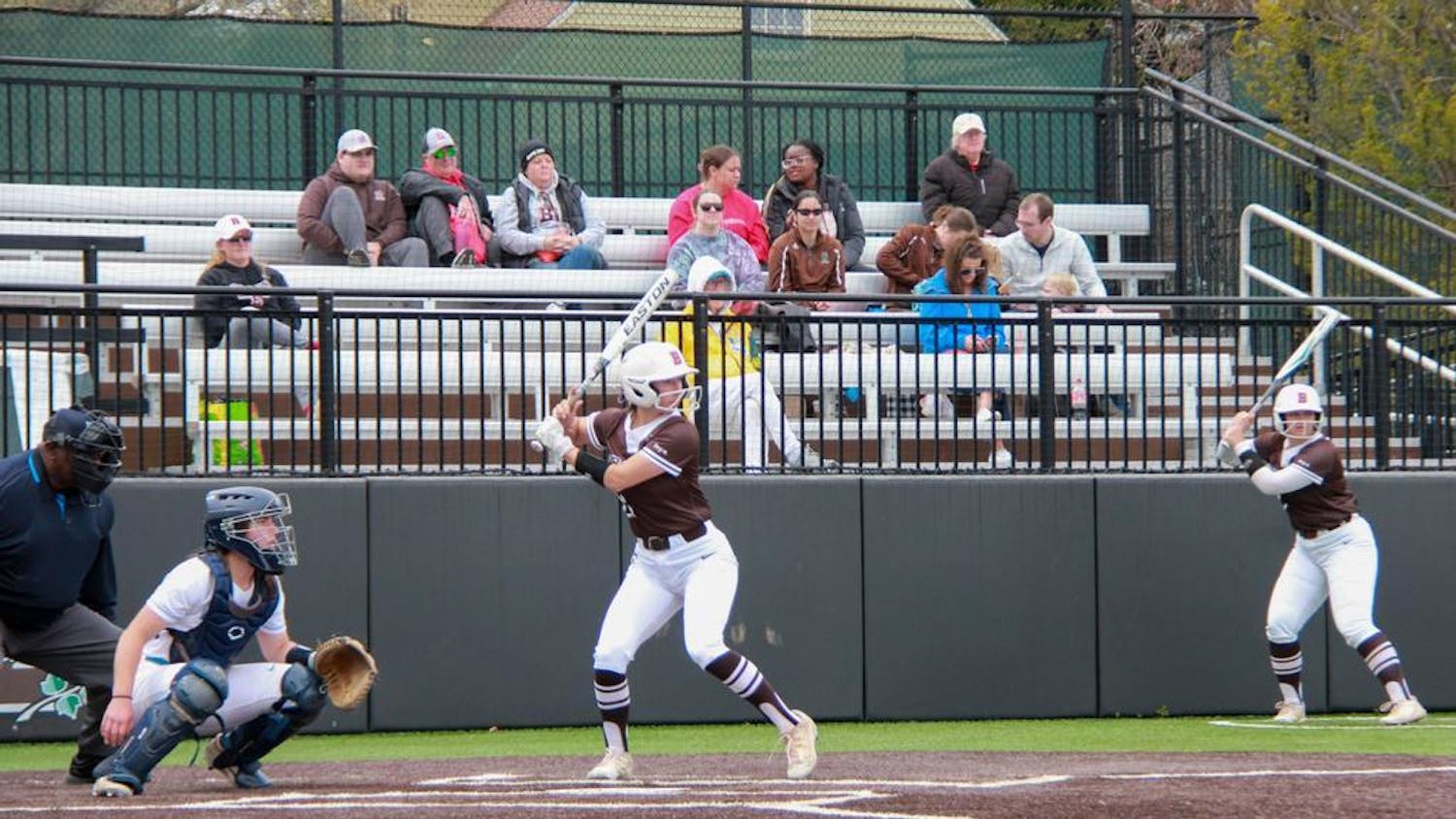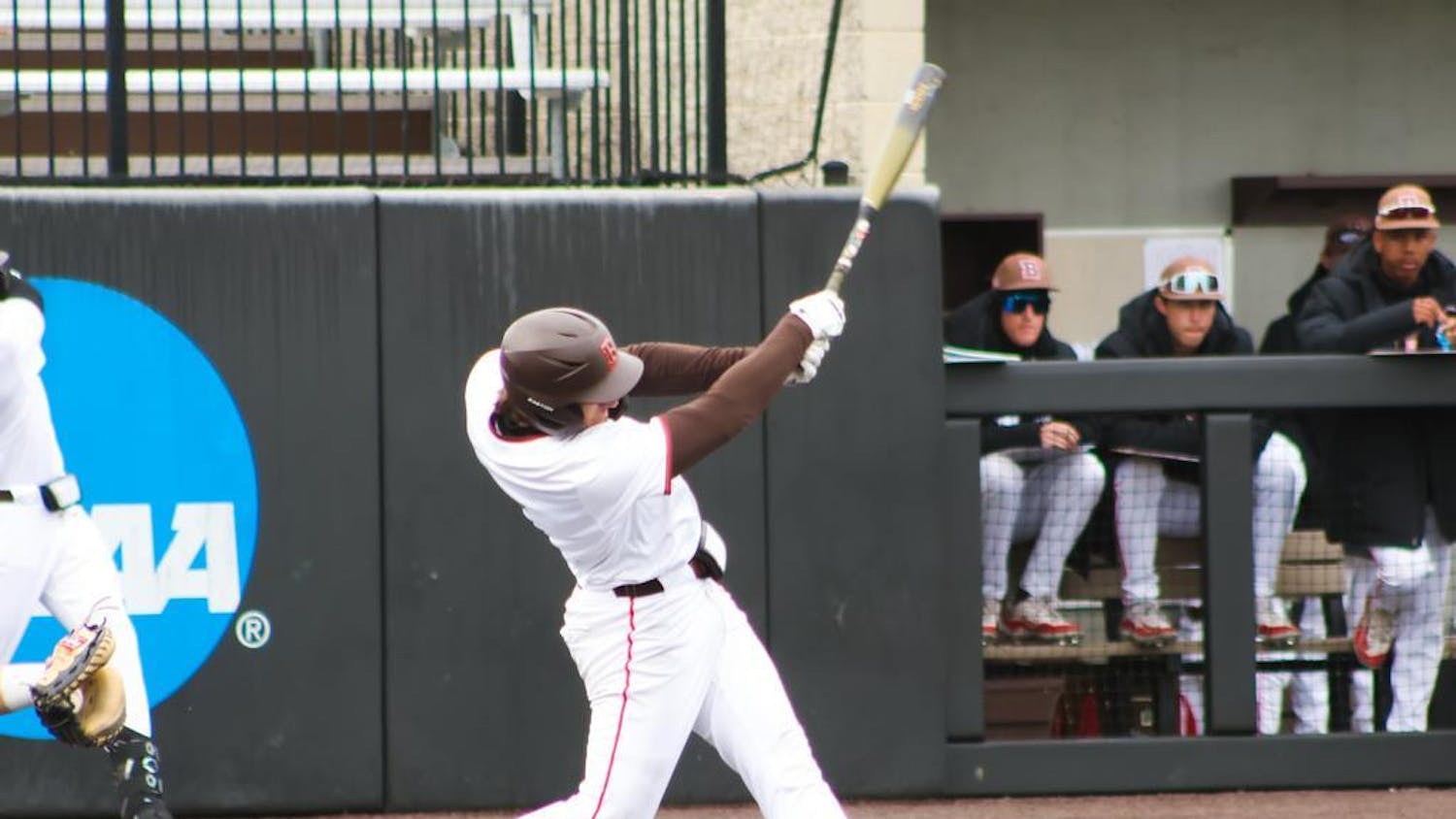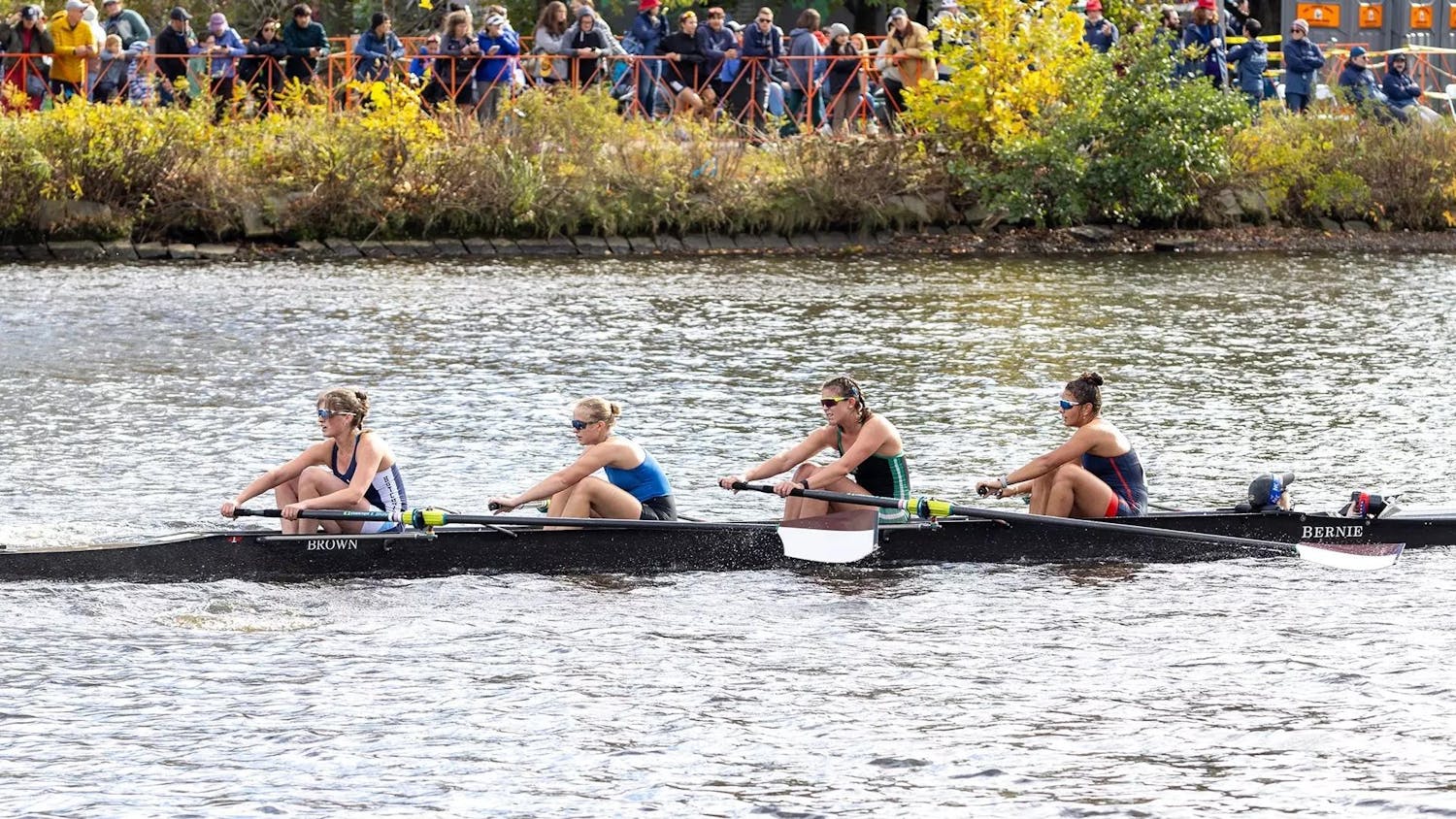Though athletes and non-athletes at Brown live side by side, varsity athletes are widely held to different standards of social conduct and face distinct obstacles to completing coursework. To overcome academic challenges, athletes receive some degree of institutional support and provide each other with peer-to-peer assistance. On the social side, athletes’ team commitments may entail adhering to additional rules of conduct set and enforced by individual teams, and when faced with matters of discipline from the University or law enforcement, athletes’ identities may inform the results — for better or for worse.
Academic affairs
The NCAA is often the target of pointed criticism in popular media over its supposed exploitation of student-athletes for profit. But discussed less often is the close relationship the NCAA maintains with member institutions like Brown to support student-athletes.
Each year, $24.6 million — about 5 percent of the NCAA’s $503 million in revenue — is redistributed back to Division I schools through the Academic Enhancement Fund, and Brown receives about $70,000 of it annually.
According to the NCAA website, the fund is commonly used for “tutorial services, equipment, supplies and additional personnel.” The value of services provided for athletes through the fund cannot factor into the financial aid packages for athletes determined by schools.
Brown’s athletic department provides laptops for student-athletes on road trips, and the Office of the Dean of the College holds weekly office hours in the Nelson Fitness Center, according to Brown’s Student-Athlete Handbook. But what many athletes cite as the most beneficial resource provided to them is the tutoring system, in which athletes are paid to help other athletes with introductory classes.
“I really dipped into the tutor system when I was a freshman,” said Rebecca Musgrove ’17 of the women’s basketball team. “In general, athletes understand the harsh scheduling. They understand that you won’t be available in daytime hours.”
Athletes may also feel more comfortable working with other athletes because of academic insecurities, said field hockey co-captain Katarina Angus ’17.5.
“Sometimes athletes at Brown can get nervous to ask for help,” Angus said. “We don’t want to ask dumb questions.”
In addition to the athlete tutoring system and universal advising resources such as Meiklejohn peer advisors, teams at Brown each designate academic peer advisors of their own within their teams. Whether officially designated as peer advisers or not, athletes are often valuable resources for their teammates.
The Herald’s 2016 spring poll found that about one-fifth of varsity athletes concentrate in economics or business, entrepreneurship and organizations. This allows underclassmen to seek advice from older teammates within these concentrations, said Christian Taugner ’17, a pitcher for the baseball team and economics concentrator.
“With BEO or econ, there’s a lot of classes you can pick from,” Taugner said. “Knowing which upper-level classes to pick and having older guys that have gone through it (help) the most.”
Angus, an art history and architecture concentrator, still seeks advice from a former teammate who graduated from the art history program because it is a relatively uncommon concentration. Within the field hockey team, players use a spreadsheet to recommend classes for teammates based on difficulty and how understanding the faculty member is toward athletes, Angus said.
Friction can sometimes arise between faculty members and student-athletes when frequent absences related to travel interfere with attendance policies or exams. In one experience, Angus worked with her coach and Carolan Norris, senior associate director of athletics, to draft an email to a faculty member regarding an attendance issue. Within the athletic department, athletes have resources “if a professor’s not budging or not being lenient,” she added.
Social standards
Off the field, being a varsity athlete often means abiding by a stricter, team-enforced code of conduct as well as the expectations of acting as a representative of the University.
Teams set different rules for in-season conduct based on the wishes of coaches or captains.
Some teams, like men’s hockey and women’s basketball, enforce the “24/48 hour rule,” prohibiting any drinking 24 hours before a practice and 48 hours before a game. Other teams, such as men’s and women’s crew, enforce a strict “dry season,” not allowing any drinking in season.
Following a dry season illustrates a level of dedication to the team and its goals, said Neil McKenzie ’17 of men’s crew. “There’s definitely a sense of collective responsibility. Over the past 20 years, there’s been an expectation that guys have been upholding.”
Crew’s dry season in the spring is set by captains and has not been broken in McKenzie’s four years, he said.
“I think it’s very reasonable,” Taugner said. “If you’re drinking 24 hours before a practice, your priorities aren’t there.”
For other teams, coaches may impose dry seasons, but they work closely with players to enforce realistic rules.
Men’s hockey typically follows the 24/48 hour rule but temporarily went dry in the 2014-2015 season during a stretch in which the team was struggling, said team captain Andrew Doane ’17.
Our coach believed “when we were going out it was affecting how we played throughout the week of practice,” Doane said. “We kind of needed a wake-up call, and our coach saw that.”
“After we turned it around and had a few big wins, our coach lifted it,” Doane said.
The field hockey team designates “social experiences,” nights when the team allows players to go out during its season. The nights are chosen based on the team’s schedule, wishes of the coaches and recent performance, Angus said.
“They’re earned — so if we don’t play well … then we might not earn the right to go out that night,” Angus said. “If (our coach) thinks our team needs to release some steam … and have fun, she’ll definitely bring us up to speed on what she thinks we can do.”
When trouble comes knocking
While some athletes are expected to abide by additional rules of conduct set by their teams, all athletes are subject to the same standards of conduct that apply to every student at Brown and resident of Providence. When athletes brush up against the University or law enforcement, their status as athletes may affect their treatment — leading to arguably lighter or harsher punishments.
Athletes often live with teammates in houses, and parties held at these team houses are a salient feature of night life at Brown for both athletes and non-athletes.
Parties thrown by teams come with risks similar to those any group of students may incur.
For example, in spring 2016, several men’s hockey players were disciplined after Department of Public Safety officers responded to a noise complaint at one of the houses where players lived. Upon arrival, the officers did not find a raucous party and left without filing a report, Doane said. But regardless of the inaction by police, players were still required to appear at a dean’s hearing and were eventually punished.
“I feel like they come down on us pretty hard. One false noise complaint, and our reputation is tarnished,” Doane said. “Anytime that I’ve had to talk to cops, they’ve been very mature and very straightforward — it’s usually administration that misconstrues information.”
Despite this sentiment among some athletes, Norris contends that treatment of athletes and non-athletes is the same with regard to conduct.
“Student-athletes are held to the same standards of conduct that pertain to all students at Brown,” Norris wrote in an email to The Herald.
Police — whether DPS or Providence Police — sometimes ask athletes which teams they play on, multiple student athletes said.
Musgrove was pulled over by the Providence Police while picking up friends from the baseball team from Whiskey Republic last year. The officer looked into the car and asked if the students were Brown athletes and allowed her to go with a warning after confirming they were athletes, Musgrove said.
Doane also recalled being asked about his status as an athlete during interactions with police officers and questioned whether this facet of his or other student-athletes’ identities should factor into matters of conduct.
Some Brown security guards also become familiar with student-athletes from working at their games, Musgrove said. In certain cases, the rapport that results from this familiarity between athletes and security personnel leads to lenient treatment, she said.





